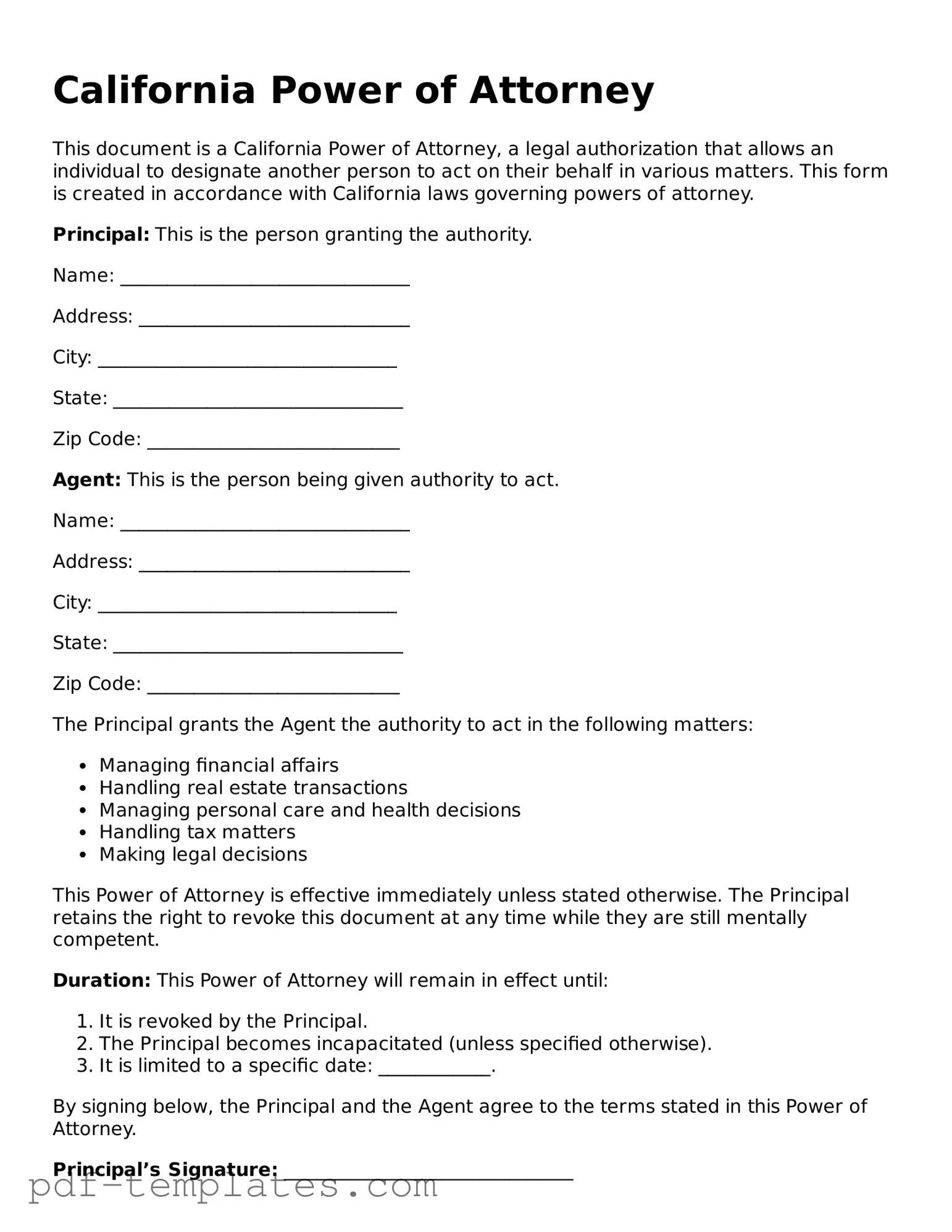The California Advance Healthcare Directive is similar to the Power of Attorney in that it allows individuals to designate someone to make medical decisions on their behalf. This document combines a power of attorney for healthcare with a living will, outlining preferences for medical treatment in situations where the individual cannot communicate their wishes. Both documents require clear identification of the principal and the agent, ensuring that the designated person understands the authority granted to them.
The Durable Power of Attorney is another document that shares similarities with the California Power of Attorney. It remains effective even if the principal becomes incapacitated. This type of power of attorney can cover a wide range of financial and legal decisions, allowing the agent to manage the principal's affairs without interruption. Like the California version, it must be signed and witnessed to be valid.
The Financial Power of Attorney focuses specifically on financial matters, allowing an agent to handle banking, investments, and property transactions. While the California Power of Attorney can encompass both financial and healthcare decisions, the Financial Power of Attorney is tailored for those who wish to delegate only financial responsibilities. Both documents require the principal to be of sound mind when signing and must be executed according to state laws.
The Living Will is closely related to the California Advance Healthcare Directive but serves a more specific purpose. It outlines an individual's preferences regarding end-of-life care and medical treatments in situations where they cannot express their wishes. While the Power of Attorney grants authority to an agent, the Living Will communicates the principal's desires directly to healthcare providers, ensuring that their choices are respected.
The Revocable Trust is a legal document that allows an individual to place their assets into a trust during their lifetime, with the ability to modify or revoke it at any time. Similar to the Power of Attorney, it facilitates the management of assets and can help avoid probate. However, while the Power of Attorney designates someone to act on behalf of the principal, a trust holds and manages the assets directly.
The Healthcare Proxy is another document that allows an individual to appoint someone to make medical decisions on their behalf. It is similar to the California Power of Attorney in that it focuses on healthcare decisions. The proxy acts in accordance with the principal's wishes and best interests, ensuring that their healthcare preferences are honored when they are unable to communicate them.
The Springing Power of Attorney activates only under specific conditions, such as the principal's incapacitation. This feature differentiates it from the California Power of Attorney, which can be effective immediately or upon a certain event. Both documents require careful drafting to ensure clarity regarding when the authority is granted and the powers bestowed upon the agent.
The Special Power of Attorney grants authority to an agent for specific tasks or transactions, rather than general authority. This contrasts with the California Power of Attorney, which can provide broad powers. Both documents require the principal to clearly outline the scope of authority granted to the agent to avoid misunderstandings.
The Medical Power of Attorney is specifically designed for healthcare decisions, allowing an agent to make medical choices on behalf of the principal. It is similar to the California Power of Attorney for healthcare, as both documents focus on medical decision-making. However, the Medical Power of Attorney may not include end-of-life preferences, which are typically addressed in a separate Living Will or Advance Healthcare Directive.
The Guardianship Document appoints a guardian for a minor or an incapacitated adult, similar to how a Power of Attorney designates an agent for decision-making. While the Power of Attorney allows for the management of affairs, a guardianship involves a court process to establish the guardian's authority. Both documents aim to protect the interests of individuals who cannot manage their own affairs.
